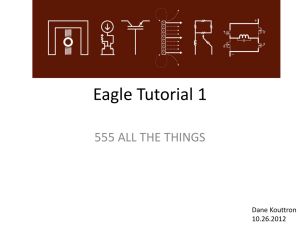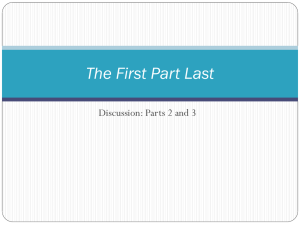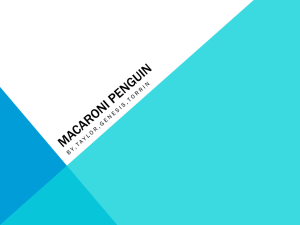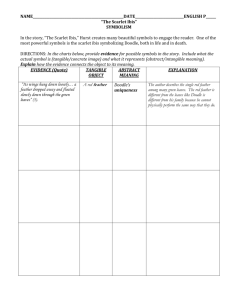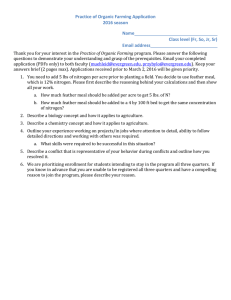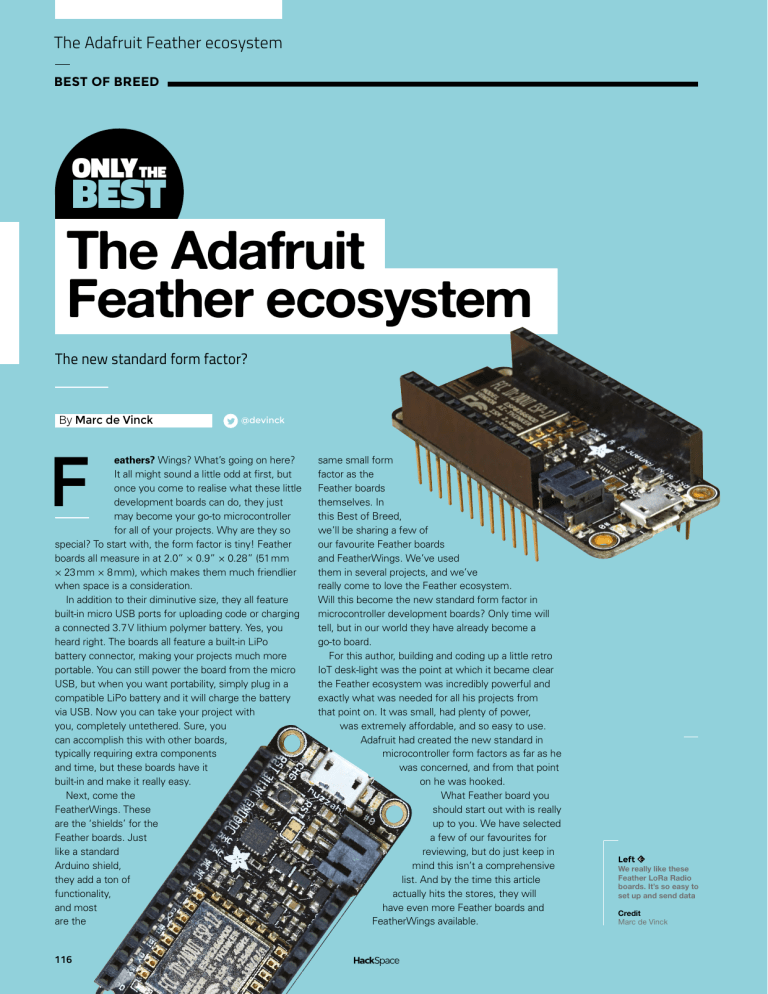
The Adafruit Feather ecosystem BEST OF BREED ONLYTHE BEST The Adafruit Feather ecosystem The new standard form factor? By Marc de Vinck F @devinck eathers? Wings? What’s going on here? It all might sound a little odd at first, but once you come to realise what these little development boards can do, they just may become your go-to microcontroller for all of your projects. Why are they so special? To start with, the form factor is tiny! Feather boards all measure in at 2.0” × 0.9” × 0.28” (51 mm × 23 mm × 8 mm), which makes them much friendlier when space is a consideration. In addition to their diminutive size, they all feature built-in micro USB ports for uploading code or charging a connected 3.7 V lithium polymer battery. Yes, you heard right. The boards all feature a built-in LiPo battery connector, making your projects much more portable. You can still power the board from the micro USB, but when you want portability, simply plug in a compatible LiPo battery and it will charge the battery via USB. Now you can take your project with you, completely untethered. Sure, you can accomplish this with other boards, typically requiring extra components and time, but these boards have it built-in and make it really easy. Next, come the FeatherWings. These are the ‘shields’ for the Feather boards. Just like a standard Arduino shield, they add a ton of functionality, and most are the 116 same small form factor as the Feather boards themselves. In this Best of Breed, we’ll be sharing a few of our favourite Feather boards and FeatherWings. We’ve used them in several projects, and we’ve really come to love the Feather ecosystem. Will this become the new standard form factor in microcontroller development boards? Only time will tell, but in our world they have already become a go-to board. For this author, building and coding up a little retro IoT desk-light was the point at which it became clear the Feather ecosystem was incredibly powerful and exactly what was needed for all his projects from that point on. It was small, had plenty of power, was extremely affordable, and so easy to use. Adafruit had created the new standard in microcontroller form factors as far as he was concerned, and from that point on he was hooked. What Feather board you should start out with is really up to you. We have selected a few of our favourites for reviewing, but do just keep in mind this isn’t a comprehensive list. And by the time this article actually hits the stores, they will have even more Feather boards and FeatherWings available. Left We really like these Feather LoRa Radio boards. It’s so easy to set up and send data Credit Marc de Vinck FIELD TEST Adafruit Feather M0 Express Designed for CircuitPython – ATSAMD21 Cortex M0 ADAFRUIT $19.95 adafruit.com I f you are wondering which Feather board should be your first, then look no further than the Adafruit Feather M0 Express, featuring the ATSAMD21 Cortex M0. Why? Well, it’s simple. This board is at a great price point, and it allows you to develop your code via the Arduino IDE, MakeCode, or CircuitPython. And that’s just the beginning! The Feather M0 features 20 GPIO pins, 256kB of on-board flash ” Don’t overlook the fact that it supports CircuitPython. This is a big deal, especially in the educational market. The board comes preloaded with the UF2 bootloader ” memory, 32kB of RAM, a NeoPixel LED, 2MB SPI flash, USB port, LiPo battery-charging circuitry, and a small prototyping area. Keep in mind that all of those features are packed into the Feather form factor of only 2” × 0.9” × .28” (51 mm × 23 mm × 8 mm). Do you need any more reasons to love this board? STILL TO COME Adafruit is continuing to develop the Feather platform. It will be focusing on higher-powered microcontrollers to better support CircuitPython. And just on the horizon is a Feather that will feature the 2.4GHz Nordic Semiconductor nRF52840 that will have native USB and Bluetooth LE. Adafruit is also actively developing more boards that will interface with other protocols like ZigBee, CAN, and LTE cellular networks. Above The standard Feather board in an evergrowing ecosystem Don’t overlook the fact that it supports CircuitPython. This is a big deal, especially in the educational market. The board comes preloaded with the UF2 bootloader. This means all of your code can be dropped on the board, just like saving a file to a USB drive. No compiling, no uploading to the board, and more importantly, no drivers needed. It’s really simple and works on a wide array of computers. VERDICT Hard to go wrong with this simple Feather board 10/ 10 117 The Adafruit Feather ecosystem BEST OF BREED Adafruit Feather HUZZAH with ESP8266 Adding WiFi the easy way ADAFRUIT $16.95 adafruit.com T he Feather HUZZAH ESP8266 is Adafruit’s answer to all the hype surrounding the ESP8266 WiFi development board. The ESP8266 is an amazing little board that packs a lot of power. Unfortunately, it also has a few limitations, and it can be a bit difficult to work with effectively. Yes, you can do a lot with the board on its own, but by adding all the features of a Feather board, you can prototype much faster, and typically much more easily. I’m a big fan of the ESP board, but I also like to build projects fast, and that’s why I typically grab a Feather HUZZAH when we get building. The convenience of having the USB plug, along with a battery-charging circuit, is hard to beat. We also like the auto-reset since it saves a lot of time, especially when you’re in the early stages of code development. Did we mention the biggest reason we like this board? Take a look at that price! WINGS TO HELP YOU FLY Keep in mind that the Feather boards are just part of the overall ecosystem. Adafruit has so many FeatherWings to provide additional functionality and connectivity. What’s a FeatherWing? It’s another PCB populated with extremely helpful components that you add on top of, or sometimes below, the Feather board. It’s a similar system to Arduino shields and BeagleBone capes. These boards add a ton of functionality to an already capable little microcontroller board. There are FeatherWings for adding motor control, LEDs, game pads, LCD screens, and many more options. At the time of writing this article, there were over 60 different FeatherWings available on the market. You can learn a lot more about how to use your Feather board over at the Adafruit Learning System: hsmag.cc/jYnOXK. 118 Above This author’s go-to Feather board for any IoT project ” VERDICT The convenience of having the USB plug, along with a battery charging circuit, is hard to beat ” WiFi in a Feather format! What’s not to love? 10/ 10 FIELD TEST Adafruit Feather M0 Bluefruit LE Communicate with tenth-century Norse kings ADAFRUIT $29.95 adafruit.com T his is the Adafruit Feather M0 Bluefruit LE, an Arduino-compatible board with Bluetooth Low Energy, USB connectivity, and battery charging. It’s the same as the Feather M0, with the addition of a BLE module. This enables your project to communicate with your computer or smartphone, even one running iOS, without any special certifications. The board features an nRF51822 chipset from Nordic, which is capable of easily sending strings of data wirelessly via a UART RX/TX connection. Adafruit provides apps for Android and iOS to get you up-and-running fast. In addition to these basic BLE functions, the board is capable of a lot more via AT command sets. You can query the die temperature, check battery voltage, and more. You can even use it to simulate a HID keyboard, which allows anyone with even basic knowledge of electronics to make interactive projects that control a computer. Be sure to check out the website for a list of everything this capable little board can do. ADAFRUIT MINI COLOUR TFT WITH JOYSTICK FEATHERWING VERDICT Complicated Bluetooth protocols made simple 9/ 10 $24.95 adafruit.com You might think that the FeatherWing format is too small for a colour TFT display, but you’d be wrong. This FeatherWing not only features a 160×80 colour TFT display, but it also has a five-way joystick and two buttons. This might be my personal favourite add-on FeatherWing to the Feather ecosystem, especially whenever I need user feedback in a project. Above A simple solution to a sometimes difficult technology 119 The Adafruit Feather ecosystem BEST OF BREED Adafruit Feather 32u4 RFM95 LoRa Radio – 868 or 915 MHz – RadioFruit Distance is no barrier ADAFRUIT $12.50 adafruit.com T he Adafruit Feather 32u4 LoRa Radio, which Adafruit refers to as RadioFruit, is its personal spin on incorporating a microcontroller with a 900 MHz Long Range (LoRa) packet radio transceiver. The microcontroller is a 32u4, with a 868/915 MHz radio built right into the Feather form factor. DC MOTOR + STEPPER FEATHERWING ADD-ON FOR ALL FEATHER BOARDS $19.95 adafruit.com LoRa technology has a longer range than 2.4 GHz radios, is very low power especially compared to WiFi, and this board features built-in USB and battery charging circuitry. We have tested this board to a range of about 250 feet and it worked flawlessly, but that’s nothing compared to Adafruit’s testing, which was successful at 1.2 mi/2 km line-of-sight. Keep in mind that under ideal conditions, LoRa radios can transmit up to up to 12 mi/20 km. Just remember that LoRa is not going to transfer audio or video files that far, as it’s best for very small bits of information. However, there are lots of applications where you need to transmit small packets of data from remote sensors, and that’s when this board really shines. The Adafruit Motoshield Kit for Arduino is one of the most popular add-ons when prototyping with a standard Arduino form factor. This shield brings all that functionality to the FeatherWing format, making it small, light, and just as functional. This FeatherWing will allow you to control two bi-polar stepper motors or four brushed DC motors, or one stepper and two DC motors easily. Above Long range and low power communications are a breeze 120 VERDICT A great way to get started with LoRa radio 9/ 10 FIELD TEST Adafruit Feather 32u4 Adalogger Keep data safe from power cycles ADAFRUIT $21.95 adafruit.com T here are times, especially when gathering vast amounts of data from a sensor network, that some extra storage would be really, really, handy. That’s where the Adafruit Feather 32u4 Adalogger with its built-in microSD card slot comes into play. The processor is the ever popular ATmega32u4 clocked at 8MHz. It has 32kB of flash and 2kB of RAM. And just like all the other Feather boards, it has built-in USB and LiPo battery-charging circuitry. Now, for just a few dollars, you can easy add a few gigabytes of memory to your project. Left Tons of space for logging your data VERDICT Adding a ton of storage is as easy as adding a microSD 8/ 10 Adafruit Feather 32u4 FONA When WiFi just won’t reach ADAFRUIT $44.95 adafruit.com J ust a few years ago, connecting your microcontroller to a cellular network was virtually impossible. Now it’s actually fairly simple, with the help of the Adafruit Feather 32u4 FONA. The board features all the usual Feather niceties like USB and LiPo battery charging, but it also includes a quad-band 850/900/1800/1900 MHz FONA800 module for cellular connectivity. Keep in mind you’ll need to get an activated 2G mini SIM card and an external antenna prior to connecting to your network. After that, sending data such as SMS messages is fairly trivial thanks to the included libraries and examples provided online. Left Cellular connectivity made simple VERDICT One thing to note: if you are in the US, Adafruit recommends any carriers that use the T-Mobile network, as some US carriers have shut down their 2G network. And if you want to make phone calls, you’ll also need to add a microphone and speaker. But that’s it! Need cellular connectivity? Yep, Feather has that too! 8/ 10 121

